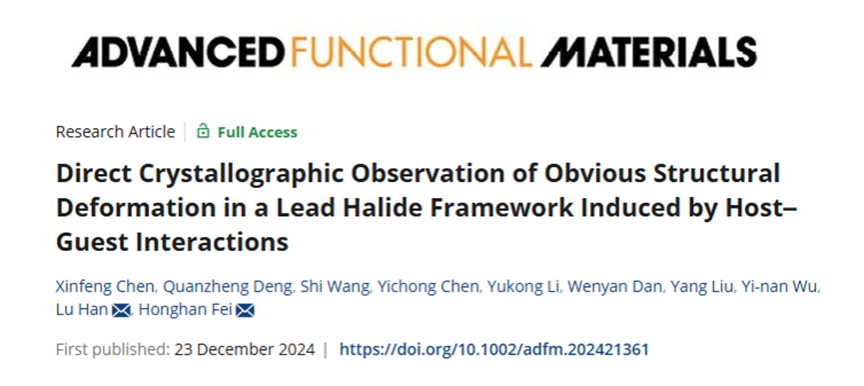
Host–guest chemistry represents a prominent field within many inorganic solids, where the host entity typically retains its original lattice. The hybrid composition and soft lattice of organolead halides make their structural changes and optical properties highly sensitive to host–guest interactions, distinguishing them from conventional inorganic solids. Herein, 3D electron diffraction tomography, an advanced crystallographic technique, is employed to observe the pronounced structural deformation of the lead bromide layers upon the cleavage of coordinated solvent molecules, which renders a coordination unsaturated side for the activated Pb2+ sites. Moreover, the structural transmutation induced by this process leads to a significant enhancement and red-shift in self-trapped emission, which is analyzed in-depth using a variety of photophysical studies. More importantly, the activated Pb2+ centers are able to re-coordinate with the environmental N,N-dimethylformamide vapors in a selective and reversible manner, highlighting high application potentials in multilevel information encryption and anti-counterfeiting.

Link: https://doi.org/10.1002/adfm.202421361